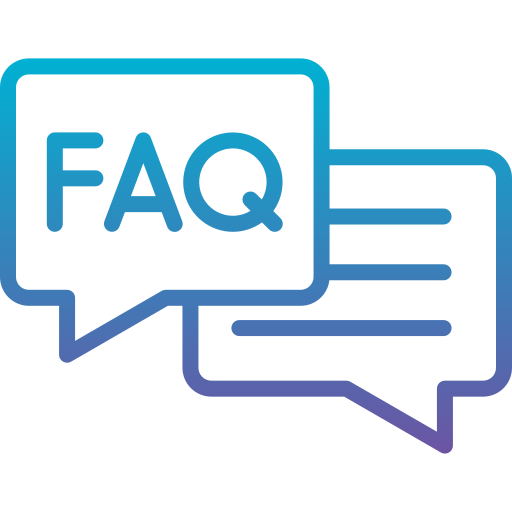I wrestle with cutting through the constant digital noise. Imagine they instantly see your value? In a world demanding attention in mere seconds, delivering your core message clearly feels like an ever-greater challenge. Potential customers need to grasp your solution's impact fast.
That's why mastering brief, impactful visuals is crucial. These quick glimpses build immediate understanding, creating that lasting impression you seek. Let's explore 30 sec advertisement examples designed to connect deeply and drive real results.
It’s crucial to plan ahead when it comes to high-quality video production. Discuss with our team, how you can get visual style, budget, timeline in sync.
Jai Ghosh
Video Producer at Advids
Let's talk

How do you create effective short video ads that people will watch?
To create effective, watched short video ads, grab attention immediately with a strong hook in the first few seconds. Clearly convey your core message early using strong visuals and a dynamic pace. Focus on showing benefits rather than just telling, tailoring content style to the specific platform and your target audience's viewing habits for maximum engagement and retention.
How do you develop an effective video advertising strategy?
Develop an effective video advertising strategy by defining clear objectives, identifying your target audience, and planning content suited for their journey. Allocate budget wisely across initiatives and set specific KPIs to measure success. Align your video efforts with overall business goals for a cohesive and impactful campaign across relevant platforms.
What are best practices for creating engaging video content on social media?
Best practices for engaging social media video include designing for sound-off viewing with captions, keeping content concise for mobile, and using platform-native formats like vertical video. Incorporate clear calls to action and consider authentic styles or user-generated content to build trust and relevance with the audience on each specific social platform.
What are some techniques for crafting compelling video ad hooks?
Craft compelling video ad hooks using techniques like asking a question relevant to the viewer, showing unexpected visuals, or demonstrating immediate value within the first few seconds. Introduce elements that spark curiosity or hint at a reveal to keep viewers watching past the initial attention-grabbing moment, making the first few seconds count significantly.
What are the key video content engagement metrics to track for success?
Key engagement metrics include View-Through Rate or Completion Rate to see how much of the video is watched, and Engagement Rate for interactions like likes and shares. Track Click-Through Rate to measure CTA effectiveness and use Audience Retention graphs to identify drop-off points. Ultimately, connect these metrics to conversion data like leads and sales for comprehensive success evaluation.
What makes a commercial video high-performing?
A high-performing commercial video features clear, concise, and relevant messaging that resonates deeply with the target audience. It employs a strong visual concept with an immediate hook in the opening seconds. A clear call to action guides viewers, and the ad is optimized for the specific platform where it is seen, contributing to memorability and effectiveness.
How can analyzing video metrics help improve video advertising performance?
Analyzing video metrics allows identifying exactly where viewers drop off via retention data and understanding which calls to action drive clicks through CTR analysis. Examining engagement shows what content resonates, while conversion metrics link views to business outcomes. This data informs iterative testing and refinement of creative and targeting for improved performance.
How can brands use video to build awareness?
Brands build awareness with video by consistently using brand identity elements visually and telling memorable stories reflecting brand values. Creating relatable or entertaining content encourages sharing, expanding reach. Focusing on simple, broad messaging and using repetition across short videos helps reinforce brand recognition among a wide audience.
How can you create an emotional connection with your audience through video ads?
Create emotional connections by featuring relatable human experiences and using narratives that build empathy or suspense. Align the video's tone with emotions relevant to the brand and focus on the benefit to the viewer's life. Evoke specific feelings like joy or warmth appropriately to build rapport and make the ad more impactful on an emotional level.
How do you analyze video advertising content performance?
Analyze video ad performance by tracking key metrics like VTR, CTR, engagement, and conversions against campaign objectives. Segment data by platform or audience to gain deeper insights. Use audience retention data to pinpoint content issues, compare current results to benchmarks, and ultimately relate video performance metrics back to overall business goals like ROI.
Delivering a compelling message in 30 seconds
Moving beyond fundamental visual impact and rhythmic pacing, crafting an influential 30 sec advertisement demands strategic execution focused on measurable results. Professionals prioritize translating engagement into action and understanding precisely how audiences respond. This requires a deliberate approach to calls to action, performance tracking, and continuous refinement based on data. They recognize that every second counts, and optimizing content for viewer context across different platforms is paramount for success.
Measuring the true effectiveness of a short advertisement goes beyond simple view counts. Creators track production costs against tangible value generated. This includes assessing increases in qualified leads driven by the ad, reductions in the sales cycle length resulting from better-informed prospects, or even decreased support requests because an animated ad video clearly explained features. This focus on return on investment ensures that creative efforts directly contribute to business objectives.
They understand the power of demonstrating their offering within relevant contexts. Showing how a product integrates seamlessly into existing workflows or solves specific daily challenges for a user's industry makes the value proposition relatable and believable. Incorporating social proof, such as briefly flashing recognizable company logos or sharing compelling user statistics, quickly builds credibility and trust with the audience.
- Crucially, they utilize precise, action-oriented calls to action. Instead of generic prompts like "Learn More," they employ specific directives relevant to the viewer's stage and video objective, such as "Start Your Free Trial" or "Download the Report."
- Analyzing viewer behavior provides invaluable insights. Tools like heatmaps integrated with video players reveal exactly which segments capture attention, which are rewatched, and where interest drops, guiding content refinement.
- Implementing A/B testing allows creators to systematically test different ad elements—like thumbnail images, initial content hooks, CTA placement or wording, or minor script variations—to discover what resonates most strongly and drives higher conversions.
- Optimizing content for specific platforms involves considering viewer intent and environment. Videos intended for social feeds often require instant attention hooks and legibility without sound using text overlays, while content embedded on a product page can assume higher viewer interest and offer slightly more detail.
Mastering the thirty-second format lies in this blend of strategic content creation, data-driven optimization, and clear, actionable next steps for the viewer.
Crucial video advertisement call to action elements
Building on the fundamental need for clarity established previously making video advertisement calls to action truly effective requires strategic refinement and a focus on measurable results. It extends beyond simply telling viewers what comes next savvy advertisers carefully tailor their final ask to align precisely with the viewer's journey and the video's specific objective aiming for maximum impact.
Crafting action-oriented text for calls to action proves far more effective than generic prompts. Replacing vague invitations such as Learn More with precise instructions like Start Your Free Trial or Request a Demo provides interested viewers with a clear unambiguous next step directly aligned with their potential interest level and where they are in the customer journey.
Evaluating advertising success extends significantly beyond simple view counts. A robust approach involves measuring actual return on investment by tracking production costs against tangible value generated. This includes quantifying increases in qualified leads noting reduced sales cycle length due to better informed prospects and recognizing decreased support requests from users who fully understood features from the video content.
Leveraging data and implementing continuous testing are paramount for optimizing performance. Utilizing viewer behavior analytics including heatmaps helps pinpoint exactly which moments capture attention and where interest might diminish. This granular data informs strategic adjustments to both content and CTA presentation. Furthermore platforms demand tailored approaches think about how a quick app promo video designed for catching attention in a social scroll differs fundamentally from a more informative animated explainer ad viewed by someone already researching on a product page.
- Enhance product demonstrations using relatable real world scenarios clearly showing how features integrate into existing user workflows or solve specific everyday problems.
- Build immediate confidence and credibility by incorporating social proof elements like brief flashes of well known client logos or compelling statistics about satisfied users.
- Implement rigorous AB testing on various video components including thumbnail images initial content segments and crucially CTA placement or wording to identify what resonates most.
- Develop video content remaining fully effective even when viewed without sound particularly crucial for maximizing reach within silent social media environments.
Consistently analyzing performance data and iteratively testing variations empowers advertisers to continually refine their strategy ultimately maximizing the effectiveness of each crucial call to action within their video campaigns.
Crafting a short ad video narrative that resonates
Building on initial viewer engagement, focus shifts towards the actions they take and the tangible value created. Precise calls to action become paramount, moving beyond general prompts. Creators should favor specific verbs guiding viewers towards the next step in their journey. Tailoring these calls, whether encouraging a free trial sign-up or requesting a demo, directly impacts effectiveness. Measuring success extends past view counts to quantifying return, comparing creation costs against generated value like increased leads or reduced support inquiries resulting from clearer feature understanding presented within the video. This approach ensures efforts translate into concrete business outcomes.
Showing products operating within real-world scenarios helps viewers connect with the solution offered. A well-executed demo video ad illustrates features practically, boosting relatability and belief in its value. Demonstrating how a product integrates into existing workflows or solves specific industry challenges elevates its perceived usefulness. Incorporating social proof, such as flashes of recognizable user logos or statistics about satisfied customers, quickly builds trust and credibility, reinforcing the message's impact and encouraging viewer confidence in the presented solution.
Analyzing viewer behavior provides granular insights into ad performance. Tools like heatmaps show exactly which moments capture attention or where interest drops, identifying segments needing refinement. This data is invaluable for iterative improvement. Furthermore, optimizing for diverse platforms acknowledges varied viewer intent and environments. A brand awareness video ad on social feeds needs instant impact and often accommodates sound-off viewing with text overlays, while videos on product pages can offer more detail assuming higher viewer interest. Rigorous A/B testing across elements—from the opening seconds to call to action wording—is vital for uncovering what resonates most and drives higher conversions.
- Use calls like "Start Your Free Trial" or "Download the Report".
- Track value through qualified lead growth and decreased sales cycle length.
- Show product features used in daily tasks or industry-specific problems.
- Test different thumbnail images or the initial 10 seconds of content.
Grabbing attention quickly with the ad video visual hook
Capturing audience attention within a 30 second window demands immediate impact. This begins with the very first frames delivering a compelling visual hook that resonates instantly. Viewers scrolling through feeds decide in moments whether to watch further so the initial visuals must connect with a recognizable problem or a strong desire they hold. Instead of telling them about a solution show it through brief dynamic action demonstrating the product or service in a way that feels relevant to their world.
Showcasing products within real world scenarios or illustrating their seamless integration into existing workflows makes the value proposition tangible. Incorporating elements of social proof like brief glimpses of well known client logos or impactful user statistics quickly builds trust and credibility. These visual and contextual cues work together creating a powerful early impression. Optimizing these initial elements like the thumbnail image and the opening visual sequence across different platforms is vital for maximizing engagement.
- Replace generic calls to action with specific directives like "Start Your Free Trial" or "Request a Demo" guiding the viewer toward a clear next step.
- Analyze viewer behavior using heatmaps or attention tracking to pinpoint exactly which visual moments capture or lose interest.
- Use insights from viewer data to refine the ad's visual flow ensuring peak engagement is maintained.
- Implement A/B testing on various visual hooks or call to action placements to discover what best converts fleeting attention into action.
Every element from the initial visual grab in a Digital ad video to the final explicit instruction contributes to its effectiveness. Demonstrating clear value quickly akin to a focused Explainer ad video ensures those precious seconds lead to meaningful audience connection and measurable outcomes.
Ensuring strong brand presence within short videos
Making brands unforgettable within moments challenges creators navigating short-form video. Beyond foundational principles, strategic execution ensures lasting impact. Effective strategies move past simply showing features; they deeply connect with viewers and demonstrate tangible value. Creators must define precise video objectives, ensuring every element, particularly the call to action, drives toward that goal.
The call to action itself requires specificity. Instead of vague prompts like "learn more," employ action-oriented text tailored to the viewer's likely stage. Think "Start Your Free Trial" or "Request a Demo." Measuring success extends beyond simple view counts; evaluate the return on investment by tracking costs against tangible business value generated. This includes quantifying increases in qualified leads, reductions in the sales cycle, or even decreased support ticket volume stemming from well-informed viewers.
Demonstrating a product or service within relatable, real-world scenarios enhances its appeal significantly. Showing how it integrates into existing workflows or solves specific problems relevant to a user's industry increases perceived value. Understanding viewer interaction is crucial for optimization.
- Utilize viewer behavior tools like heatmaps to pinpoint video segments causing disengagement or rewatches. Granular data refines content strategy.
- Build credibility swiftly through social proof. Incorporating brief flashes of well-known client logos or mentioning statistics about satisfied users enhances trust. Social proof validates claims.
- Continuously refine performance through A/B testing. Experimenting with elements like thumbnail images, the initial seconds, or CTA wording reveals what resonates most effectively with the target audience. A/B testing drives higher conversions.
- Adapt approach based on platform context. While a Facebook ad video demands instant attention and potential sound independence, a landing page video ad assumes higher viewer intent, allowing for slightly greater detail and less need for immediate hook. Platform optimization is key.
Mastering pacing within a thirty second spot
Mastering thirty second advertisement requires deliberate structural choices guiding the viewer journey swiftly. Crafting an opening hook grabbing attention instantly proves paramount. Showing products within real world scenarios allows viewers connect with the solution offered. Demonstrating features context elevates perceived value quickly. Integrating social proof elements like logos or user numbers builds trust efficiently.
- Maintain consistent visual audio elements keeps viewers immersed matching brand tone authenticity.
- Driving towards clear calls to action provides viewers next steps. Action oriented language proves far effective than generic prompts. Strategic CTA placement ensures viewers act.
- Understanding success a promotional video ad involves rigorous cost benefit analysis value gained. Measuring ROI tracks production costs against value indicators increased leads reduced support volume.
- Analyzing viewer behavior using specialized tools pinpoints strong weak moments identifying engagement drop offs informs pacing adjustments. Pacing for a mobile ad video necessitates immediate impact accounting scrolling habits.
Optimizing content pacing across different platforms acknowledges varied viewing habits environments tailoring video distinct contexts.
Creating emotional impact in a 30 second ad video
Thirty seconds offer a unique opportunity to forge a deeper connection with viewers. Beyond simply being seen, the goal becomes resonating emotionally, making a lasting impression that encourages further engagement. This brief window demands precision and creativity to convert fleeting attention into meaningful interaction.
Achieving this impact requires deliberate tactical execution. Focus shifts towards actively guiding viewers and gaining insights into their responses. Success hinges on crafting compelling narratives and employing smart techniques to understand what truly moves the audience and drives desired actions within a concise format.
- Crafting compelling calls to action proves crucial. Move past generic prompts like "Learn More"; employ action-oriented language such as "Start Your Free Trial" or "Download the Report," tailored precisely to the audience journey and video objective.
- Demonstrating value through real-world scenarios makes abstract benefits tangible. Show the product or service solving actual problems or fitting seamlessly into daily life or specific industry workflows, enhancing relatability and perceived value.
- Understanding viewer behavior unlocks optimization secrets. Utilizing tools like video heatmaps and attention tracking reveals which parts captivate viewers and where interest drops, providing data to refine content for maximum engagement.
- Building trust quickly involves incorporating social proof. Featuring recognizable client logos or sharing compelling user statistics within the video enhances credibility and encourages viewers to see themselves among satisfied users.
Combining these approaches, alongside systematic A/B testing of creative elements and adapting content for diverse platforms where a social media ad video often appears, maximizes impact. Analyzing performance data ensures continuous refinement, making each short form ad video work harder towards achieving specific conversion goals and a stronger emotional bond.
Why single focus matters for 30 second advertisements
When a short advertisement hones in on one specific idea, it immediately establishes clarity. This focus prevents audience overwhelm, ensuring the central value proposition resonates effectively. Instead of a cluttered mix of information, viewers receive a distinct takeaway message they can easily remember and act upon.
This singular focus directly enables more impactful action. It becomes possible to craft specific calls to action guiding the viewer precisely what step to take next. Generic requests give way to action-oriented text directly tied to the ad's promise and the viewer's likely interest level, increasing the probability of conversion.
Furthermore, understanding audience reception is significantly enhanced with a focused message. Analyzing viewer behavior through tracking tools becomes more insightful, clearly showing how people engage with the single core concept presented. This data helps pinpoint exactly what works and where interest might drop. Integrating real-world scenarios that demonstrate a focused solution makes the message more relatable and believable.
- Specific calls to action could include prompts like "Start Your Free Trial" or "Download the Report."
- Tracking costs against the value generated, such as leads or reduced support inquiries, is simplified by measuring the impact of one clear offer.
- Insights gained from analyzing engagement inform improvements, including refining an animated short ad or adjusting messaging.
- A/B testing specific elements, from the opening hook to the final call, is highly effective when the test is centered around optimizing delivery of the singular message for different contexts like a landing page video.
Ultimately, dedicating a short advertisement's time to one key message maximizes its power to connect, inform, and drive desired outcomes efficiently across varied platforms.
Using problem solution framing in video ads effectively
Effective use of problem solution framing in short videos guides viewers past initial hooks toward meaningful action. Once attention is captured, the narrative must deepen, demonstrating how a product or service directly addresses viewer challenges. This involves more than just showing features; it means illustrating utility in relatable contexts, showing seamless integration into daily tasks or workflows. Teams should feature real-world scenarios making the offering tangible and believable.
To maximize impact, especially for a lead generation ad, concluding with a clear, actionable call is essential. Generic prompts yield poor results; instead, action-oriented text specific to the viewer's journey encourages desired outcomes. Success measurement tracks production investment against tangible results like increased qualified leads or reduced sales cycle duration. Quantifying gains provides clarity.
Analyzing viewer behavior offers insight into what resonates. Using tools reveals exactly where interest holds or drops, highlighting confusing sections needing refinement. Incorporating social proof, perhaps brief flashes of well-known company logos or statistics about satisfied users, builds credibility swiftly. For a promotional short video, adapting content for specific platforms based on user intent ensures the message lands effectively where people are watching. Teams might conduct A/B testing on thumbnails, opening seconds, or call to action wording to optimize performance iteratively.
Making video ad characters relatable quickly
Making video ad characters relatable quickly within a limited timeframe demands strategic precision. The power lies in depicting genuine, real-world scenarios viewers instantly recognize. Showcasing how a product or service integrates seamlessly into a character's life or solves a specific, relatable problem builds instant rapport. Viewers should see their own challenges or aspirations reflected, understanding the value proposition without lengthy explanation. This focus on authentic situations makes the message resonate deeply, fostering connection rapidly and demonstrating value effectively.
Crafting compelling calls to action is a crucial step after establishing relatability and value. Avoid vague prompts which lack direction. Instead, calls to action must be clear, specific, and tailored to guide the viewer towards the next desired interaction. Using action-oriented text such as "Start Your Free Trial," "Request a Demo," or "Download the Report" aligns the viewer's action with the video's objective and their position in their customer journey. This specificity maximizes the likelihood of conversion, turning engaged viewers into qualified leads or customers efficiently.
Measuring the impact of these concise efforts involves tracking key performance indicators beyond simple views. Analyzing viewer behavior analysis is essential; tools like heatmaps reveal precisely which moments within a short video commercial hold attention or cause drop-offs. This data is invaluable for identifying confusing segments or points where audience interest wanes, guiding iterative improvements to enhance relatability and engagement. Incorporating social proof within the ad, perhaps brief flashes of well-known company logos using the product or mentioning statistics about satisfied users, can quickly build credibility and trust with new viewers.
- A/B testing different creative elements yields powerful insights into audience preferences. Testing thumbnail images, the opening seconds of content, or variations in CTA wording helps identify what resonates most effectively and drives desired actions.
- Adapting content for diverse platforms is vital. Videos for social media feeds often require understanding without sound and might function best as a vertical video ad formatted for mobile scrolling.
- Videos embedded on product pages, however, can assume higher viewer intent, allowing for slightly more detailed feature demonstrations within relevant contexts, further boosting relatability.
- Ultimately, the power of these concise ads lies in their ability to show, not just tell, value through relatable human experiences and clear guidance.
Achieving quick connection in short video advertisements requires a blend of authentic portrayal, strategic messaging, and data-driven refinement. Focusing on the viewer's world and guiding their journey effectively ensures maximum impact from every valuable second.
Author & Editor Bio
A video producer with a passion for creating compelling video narratives, Jai Ghosh brings a wealth of experience to his role. His background in Digital Journalism and over 11 years of freelance media consulting inform his approach to video production. For the past 7 years, he has been a vital part of the Advids team, honing his expertise in video content planning, creation, and strategy.
His collaborative approach ensures that he works closely with clients, from startups to enterprises, to understand their communication goals and deliver impactful video solutions. He thrives on transforming ideas into engaging videos, whether it's a product demo, an educational explainer, or a brand story.
An avid reader of modern marketing literature, he keeps his knowledge current. Among his favorite reads from 2024 are "Balls Out Marketing" by Peter Roesler, "Give to Grow" by Mo Bunnell and "For the Culture" by Marcus Collins. His results-driven approach ensures that video content resonates with audiences and helps businesses flourish.




